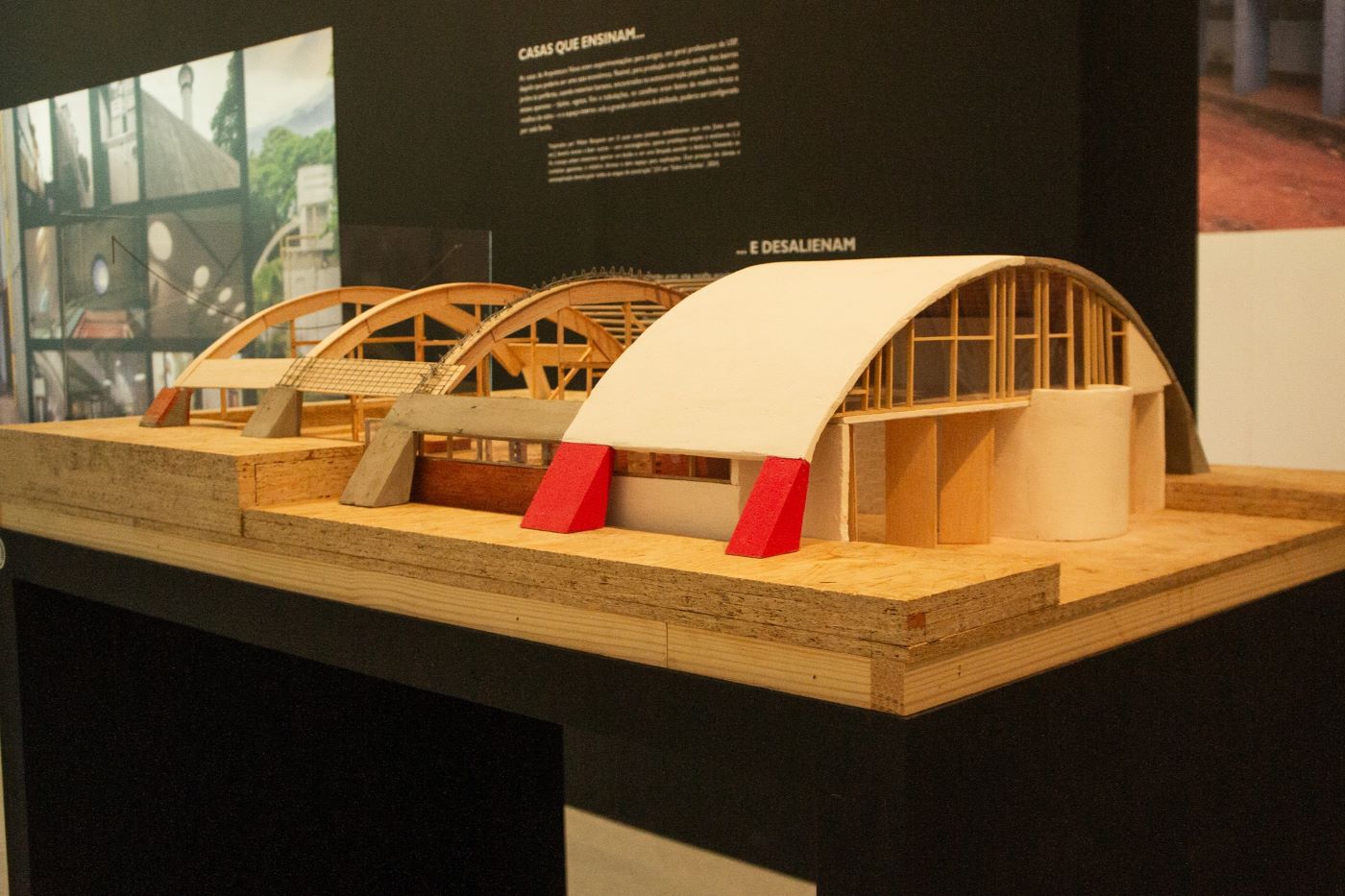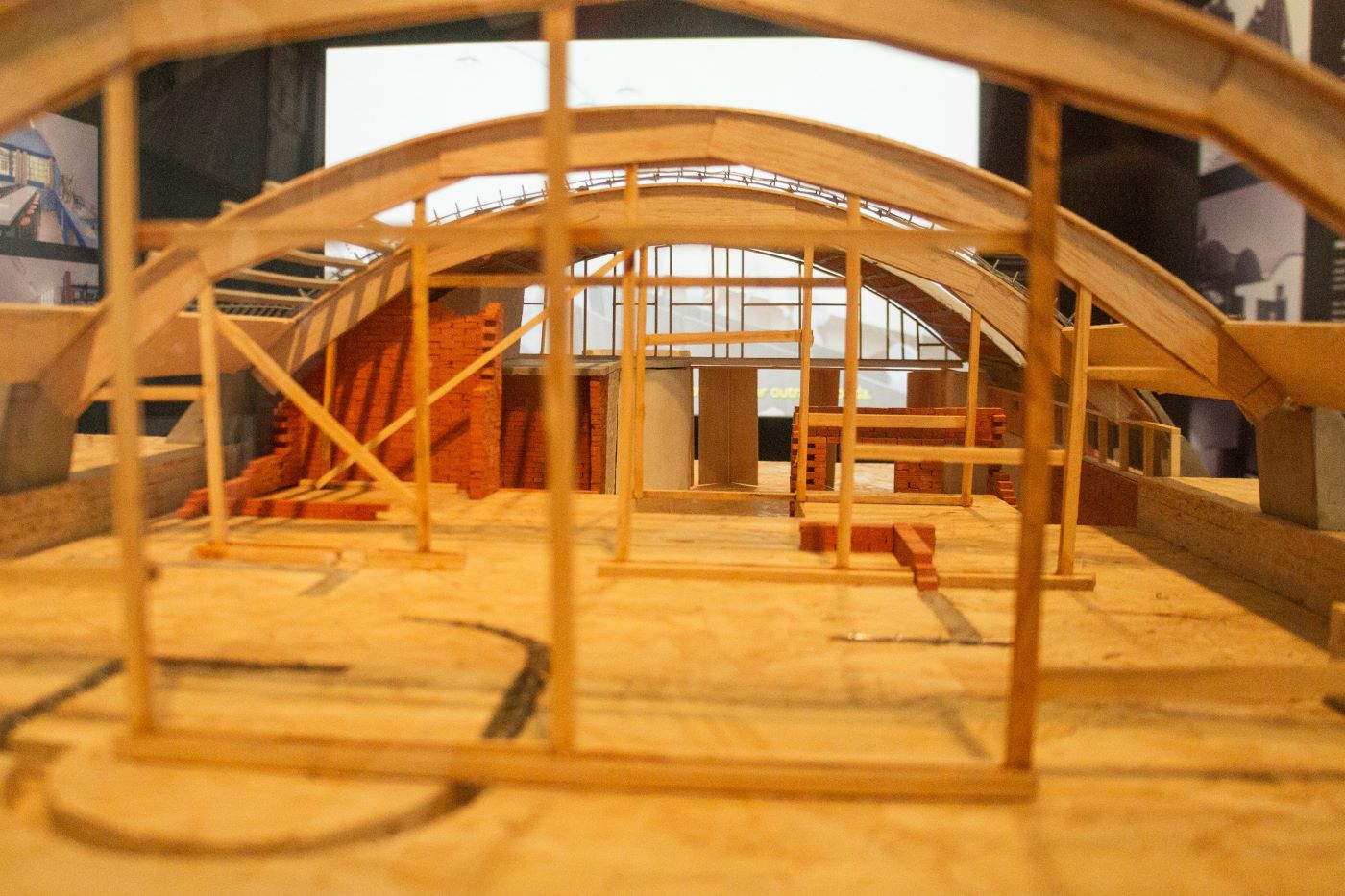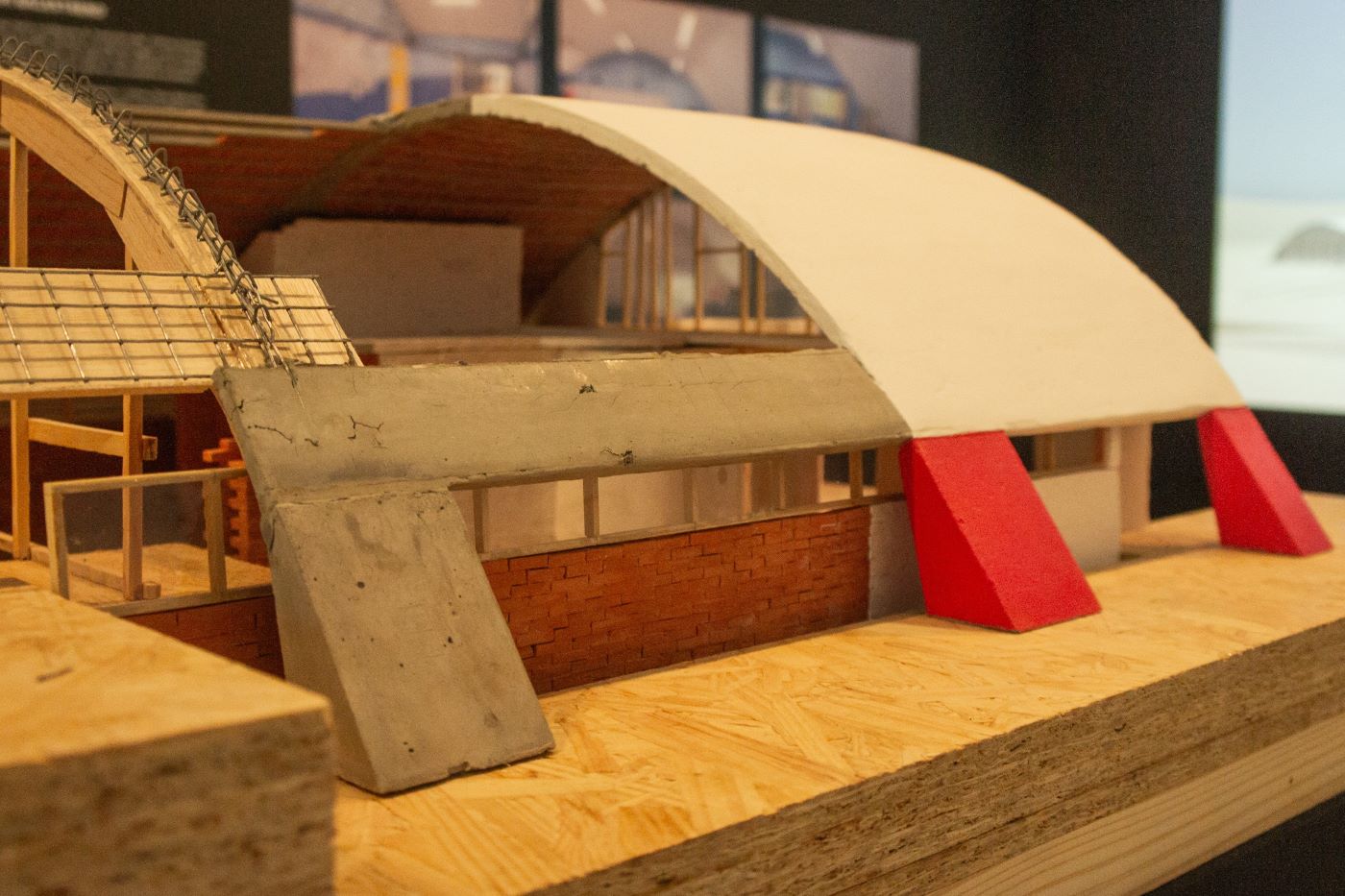Project development: Brazil
This panel presents an excerpt from the international project TF/TK – Translating Ferro / Transforming Knowledge into Architecture, Design and Work, a Brazil-UK initiative dedicated to creating and consolidating the field of Production Studies. Inspired by the critical thinking of architect Sérgio Ferro, the project investigates the relationship between conception and execution in architecture, questioning the historical separation between design and construction site and valuing labor and construction knowledge.
The exhibition brings together three main themes: the trajectory of TF/TK and its contribution to the international dissemination of Ferro's ideas; a brief introduction to the first two experimental houses he built in the early 1960s, which explored new construction solutions and forms of on-site production; and the scaled-down model of the Bernardo Issler House, produced in 2025 at IAU-USP as a pedagogical practice linked to Production Studies.
In the case of the model, the pedagogical aspect takes center stage: it was conceived not as a simple formal representation of the house, but as a tool for investigation and collective learning. By reconstructing the original construction logic of the Bernardo Issler House on a reduced scale, participants were led to discuss the political issues involved, as well as the technical and material choices. Each assembly gesture became a reflection on the project and the work, bringing the teaching practice closer to the construction site.
More than a formal synthesis, the reduced model presented here becomes a pedagogical artifact: a learning and critical device that invites us to rethink architectural training from the construction process. Incorporated as an instrument of a pedagogy of production, it materializes concepts, articulates knowledge, encourages dialogue, and points to other teaching possibilities—less hierarchical, more cooperative, and closer to the material reality of architectural practice.
We are immensely grateful to Sérgio Ferro and family and Bernardo Issler and family for the collections made available; to the participants in the workshops and dissemination courses; to the technicians at IAU-USP; and to the research support institutions.




